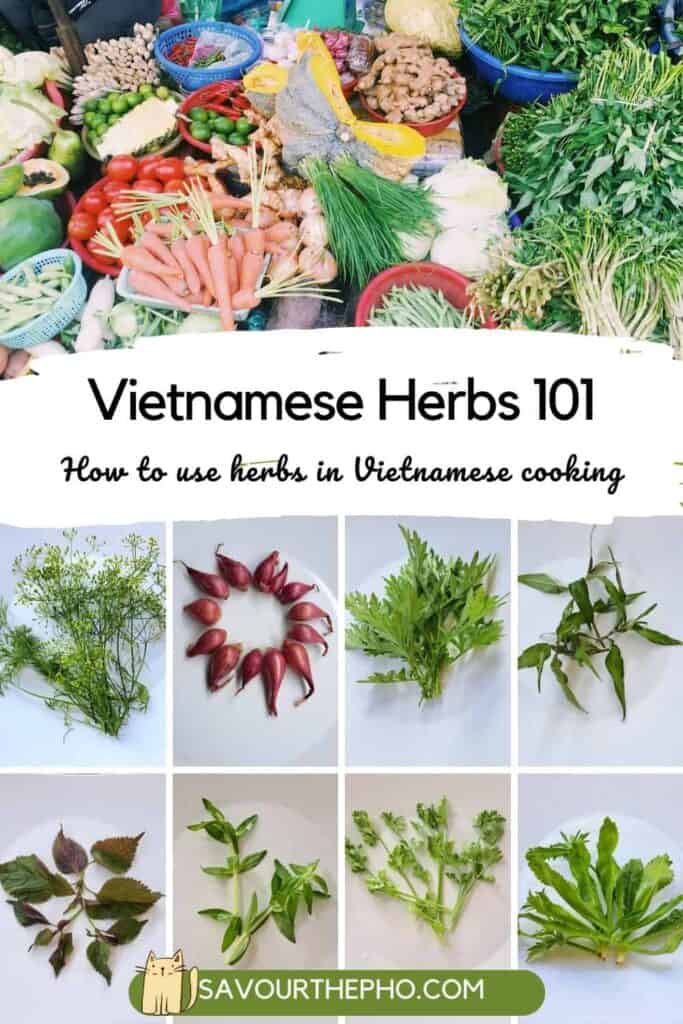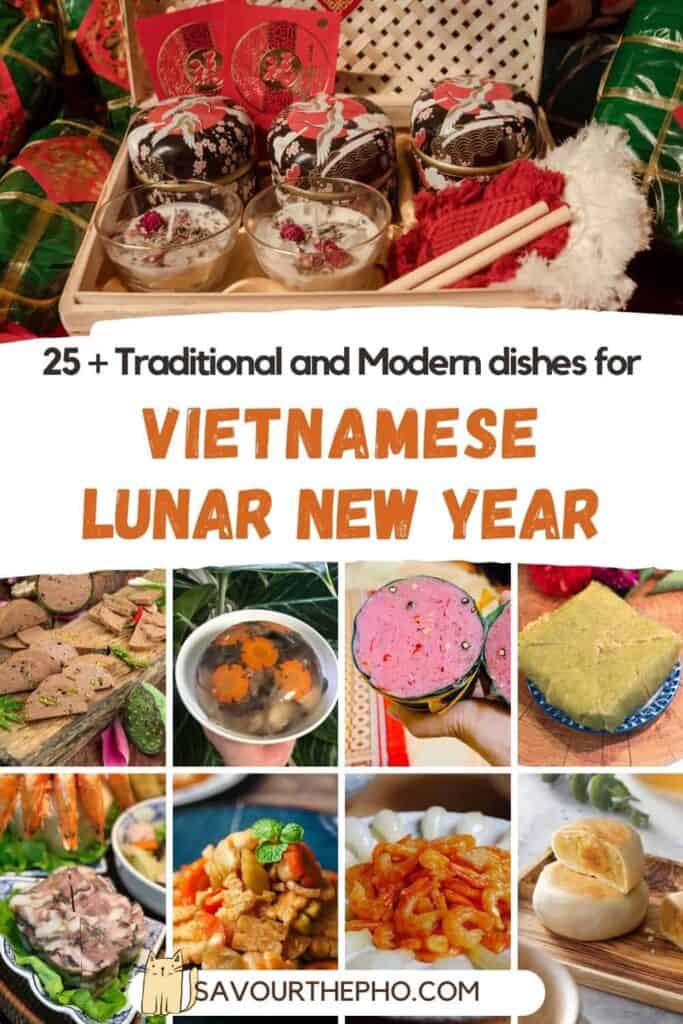From flaky pâté sô to the iconic bánh mì, French influence still lingers in Vietnamese kitchens.
What began as colonial imports have been transformed into beloved dishes, seamlessly woven into Vietnam’s own culinary story.

I’ve had the chance to visit Paris a few times, and each trip leaves me feeling a bit homesick.
There’s something about the streets, the corners, and especially the Vietnamese food there—it always takes me back to the lively vibes of Saigon and Hanoi.
Today, I’m excited to share how the French influence shaped our cuisine. I’ve rounded up 12 French-Vietnamese dishes you might not expect. If you ever visit Vietnam, definitely give them a try.
What’s Inside
- 1. Phở – Vietnamese National Dish
- 2. Phở Bò Sốt Vang – Red Wine Beef Stew Pho
- 3. Bánh Mì – Vietnamese Sandwich
- 4. Vietnamese Liver Pâté
- 5. Vietnamese Mayo
- 6. Vietnamese Coffee
- 7. Vietnamese Flan
- 8. Bánh Pa Tê Sô (Vietnamese Meat Pie)
- 9. Vietnamese Yogurt
- 10. Gà Rô Ti (Vietnamese Rotisserie Chicken)
- 11. Bánh Kẹp Lá Dứa (Vietnamese Pandan Waffle)
- 12. Bo Bun (Vietnamese Beef Noodle Salad)
1. Phở – Vietnamese National Dish
Phở isn’t just a dish; it’s Vietnam’s heart and soul. It even made its way into my blog branding, though between you and me, I’m secretly more of a Bun Bo Hue and Bun Thit Nuong fan.
The origins of Phở are still debated. It popped up in the early 1900s during French colonization. Some say it’s inspired by French Pot au Feu, while others point to Cantonese beef noodle soup.
Either way, it’s a perfect blend of spices like cinnamon, star anise, and cloves, creating a fragrant, soul-warming soup.
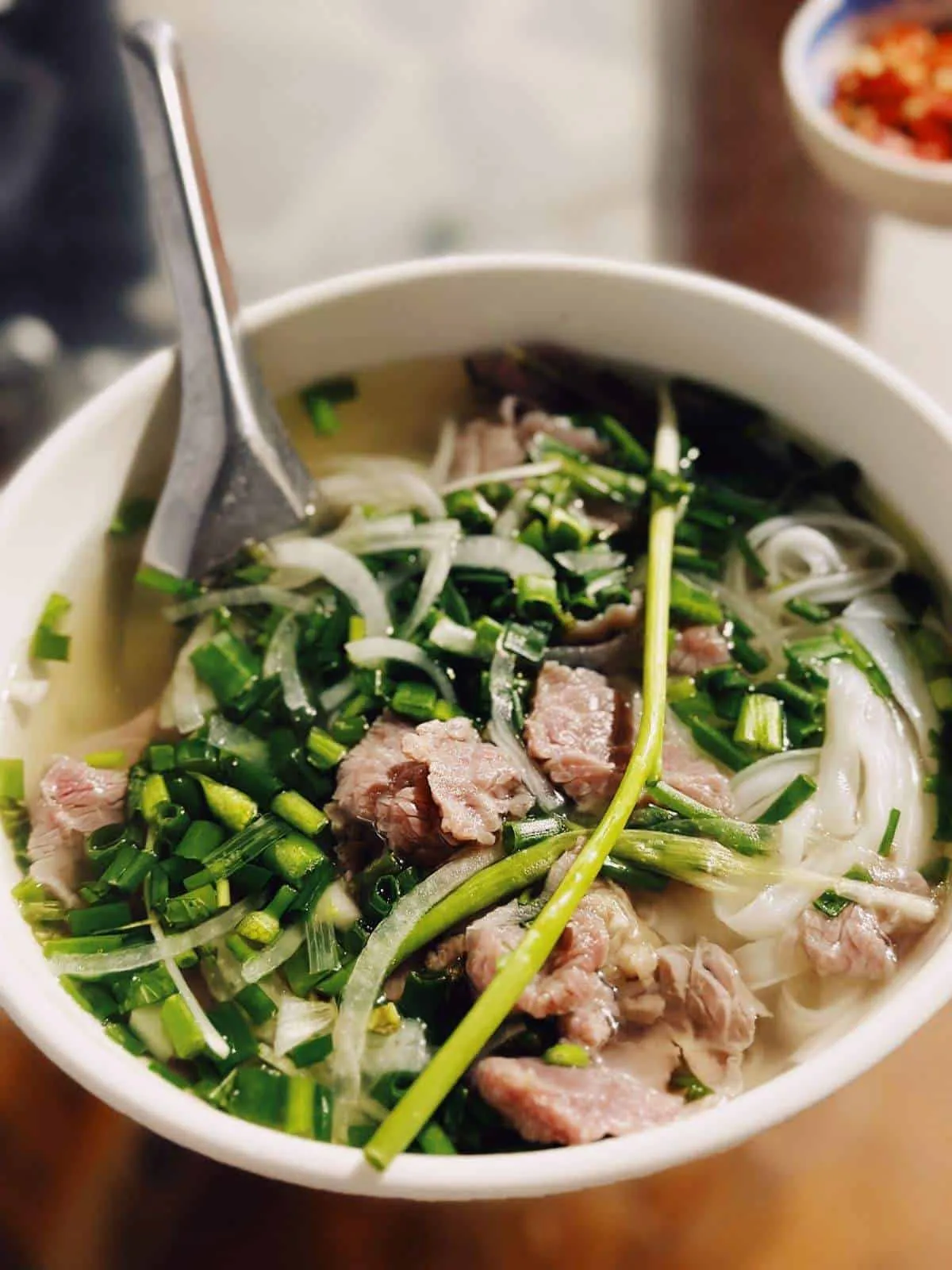
Beef Phở (Phở Bò) is the classic, but around 1939, Chicken Phở (Phở Gà) popped up. These days, Phở comes in all kinds of fun twists:
Pho Tron – dry-style chicken Pho
Pho Ap Chao – crispy pan-fried Pho with stir-fried beef
Pho Cuon – spring rolls made with Phở sheets
Instant Pot Chicken Pho – easy Pho with Instant Pot
Pho Bo Kho – Pho rice noodles with Vietnamese beef stew
In the West, people often know the Southern style, sweeter and more comforting. But if you’re in European cities with Northern Vietnamese communities, like Berlin or Prague, you might find the Northern version, lighter and more savory.
I can’t choose a favorite—Southern Phở feels like home, but Northern Phở has a depth that hits differently. Either way, Phở will always have a special place on the table.
I even wrote a post about Northern Pho vs. Southern Pho for those who want to dive deeper into this iconic dish.
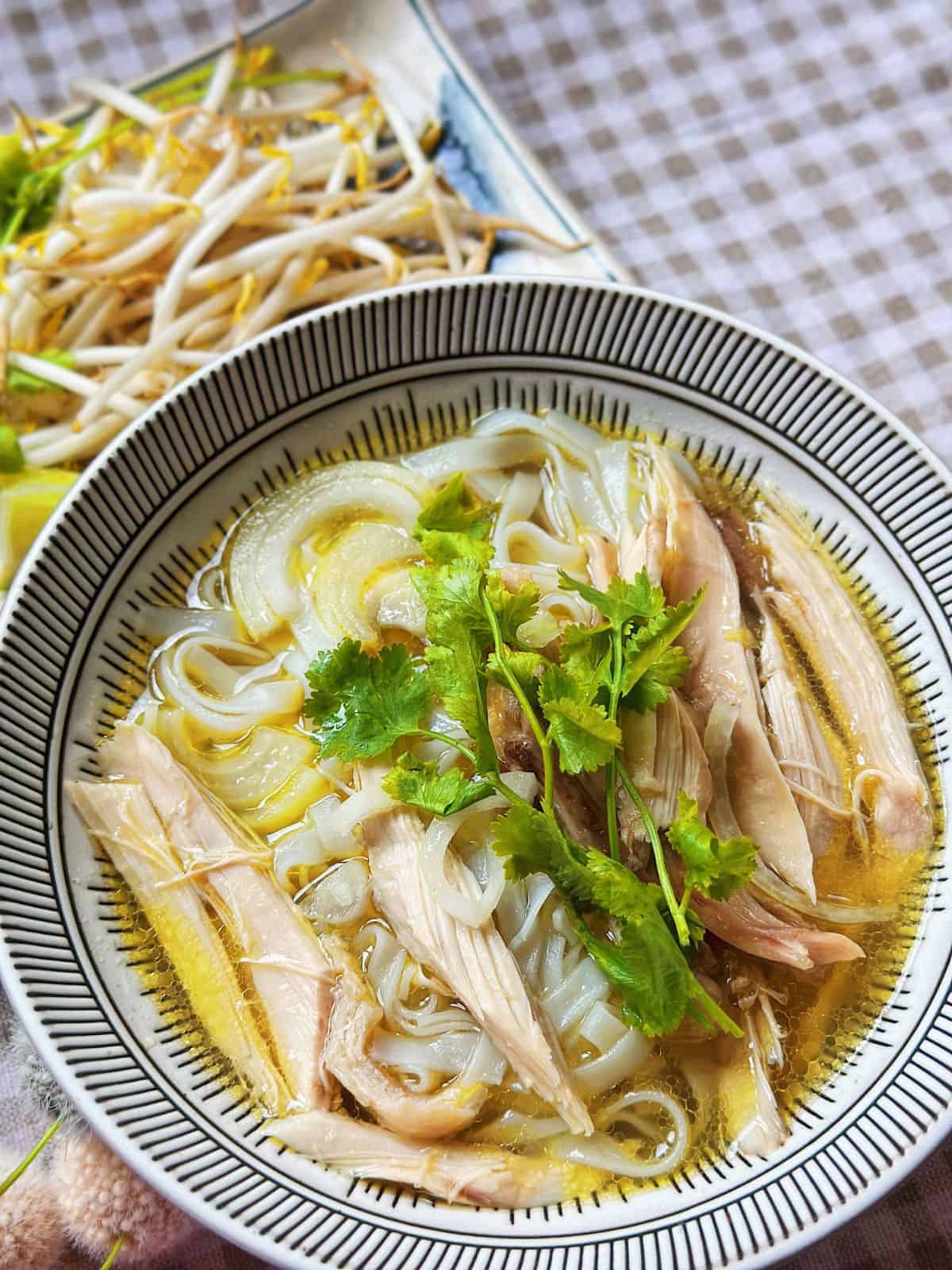
2. Phở Bò Sốt Vang – Red Wine Beef Stew Pho
If traditional Phở has a bit of mystery around its origins, Pho Bo Sot Vang is all about that Vietnamese-French fusion.
Inspired by French Beef Bourguignon, this dish takes a rich red wine beef stew and adds the signature Vietnamese pho spices.

3. Bánh Mì – Vietnamese Sandwich
When it comes to French-Vietnamese fusion, nothing beats Banh Mi. This iconic sandwich starts with the French baguette—crispy on the outside, soft and airy on the inside—and gets stuffed with delicious fillings.
There are many Banh Mi types from North to South, but I’m definitely a fan of the Southern and Central versions.

In Saigon, the classic is Bánh Mì Thịt Nguội, loaded with liver pâté, Vietnamese mayo, Cha Lua (pork roll), and the must-have Do Chua (pickled carrots and daikon).
Sometimes, you’ll find extras like Thit Heo Quay (roasted pork belly), Xiu Mai (meatballs in tomato sauce) or Bo Ne (sizzling beef)—total game-changers.
If you want to share the love at a party, try a Banh Mi charcuterie board—a deconstructed version that’s perfect as finger food or an appetizer that’ll have everyone talking.

4. Vietnamese Liver Pâté
No Bánh Mì shop in Vietnam could survive without a good liver pâté. The Vietnamese take on it comes from the French version but gives it a local twist.
Made from pork or chicken livers, Vietnamese pate is rich, velvety, and carries a gentle hint of 5-spice that makes every bite unforgettable.

And it’s not just for Bánh Mì! You’ll also see liver pâté in:
Xoi Man – savory sticky rice
Vietnamese Hot Dog – the fluffy cake version
5. Vietnamese Mayo
You can’t have a truly delicious Bánh Mì without Vietnamese mayo—also called sốt bơ trứng or bơ bánh mì. It’s creamy, flavorful, and surprisingly easy to whip up at home.

And it’s not just for sandwiches! Vietnamese mayo is a key player in treats like Banh Bong Lan Trung Muoi (Vietnamese sponge cake with salted egg) and fluffy pork floss buns.
It’s one of those little touches that makes everything taste just right.
6. Vietnamese Coffee
Coffee is another French legacy that became a staple in Vietnamese cuisine.
Back in the day, fresh milk wasn’t easy to come by, so the French and Vietnamese started using sweetened condensed milk with dark roast coffee—and the rest is history.
Coffee (and Vietnamese chocolate!) is always at the very top of my list for must-buy souvenirs from Vietnam.
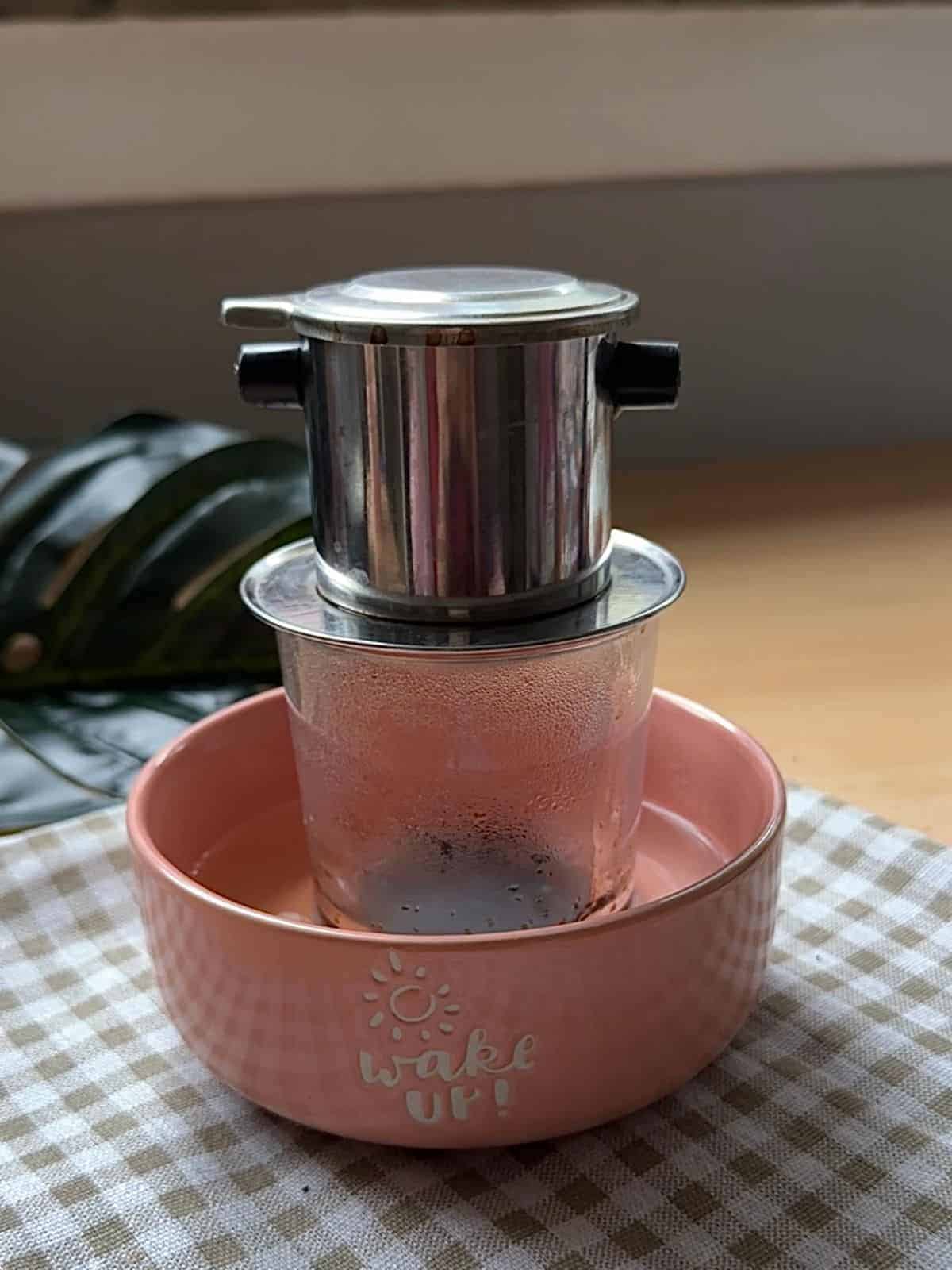
Vietnamese coffee usually leans more on Robusta than Arabica, giving it that bold, strong kick we all love.
Traditionally, it’s brewed in a metal phin filter, though instant coffee is super popular these days. (If you want, I wrote a post about popular Vietnamese coffee brands—from mainstream picks to local specialty gems.)
The most iconic drink? Vietnamese iced coffee (Cà phê sữa đá)—rich coffee mixed with sweetened condensed milk and ice.
But there are so many fun variations:
Ca Phe Den (Black Coffee) – pure and strong
Bac Xiu (White Coffee) – less coffee, more condensed milk, sometimes with cocoa, Saigon’s specialty from Chinese immigrants
Ca Phe Trung (Egg Coffee) – a Hanoi classic with whipped egg yolk froth on top
Ca Phe Dua (Coconut Coffee Frappé) – went viral thanks to Cộng Cà Phê
Ca Phe Muoi (Salt Coffee) – topped with salted cream, specialty of Huế
Ca Phe Bo (Avocado Coffee) – a fun twist combining black coffee and avocado smoothie
There’s even Ca Phe Sua Tuoi (Fresh Milk Coffee), Ca Phe Sua Chua (Yogurt Coffee)… and honestly, I’ve lost count, lol.
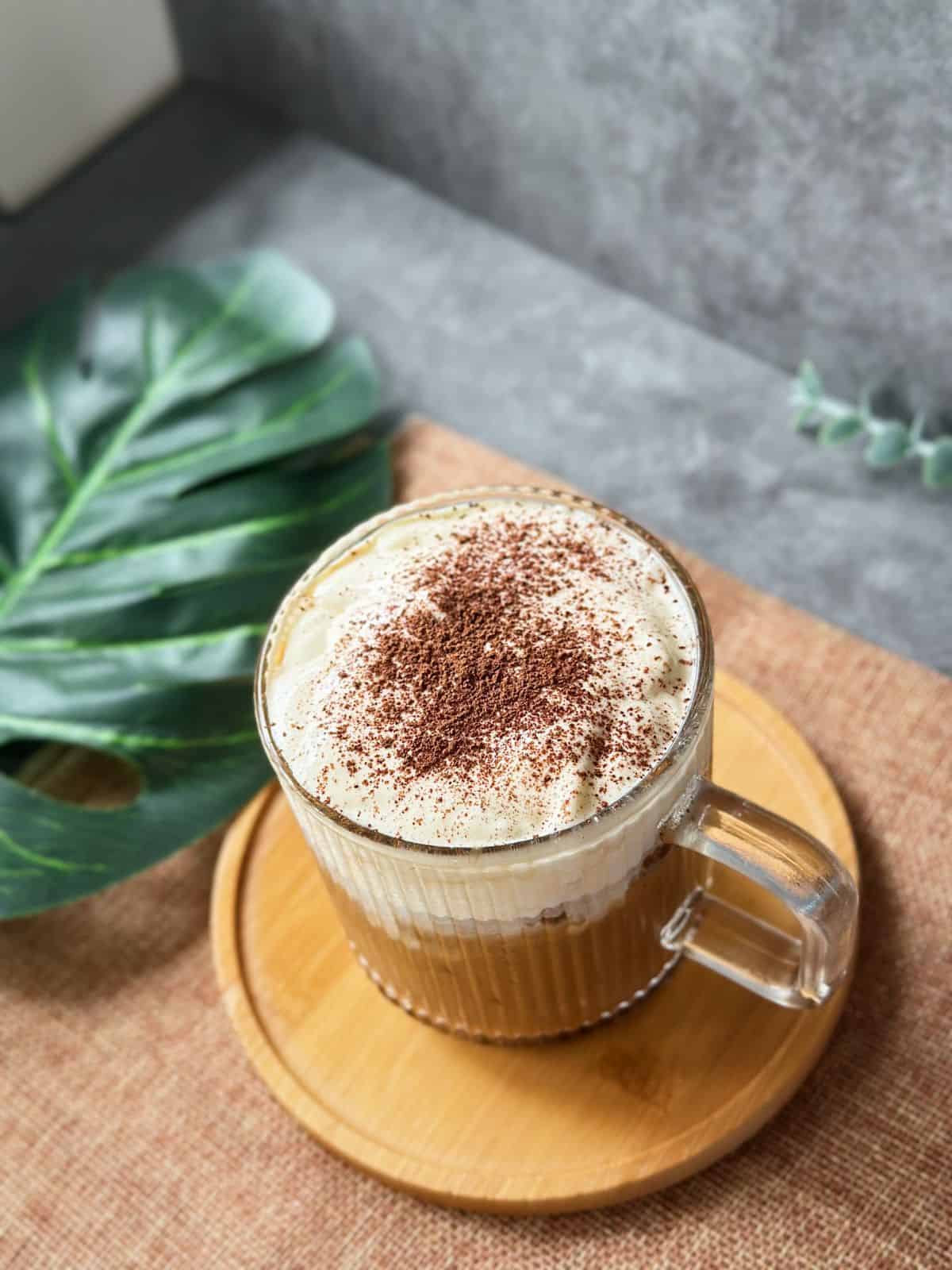
7. Vietnamese Flan
Banh Flan is another sweet gift from the French and has become a true classic in Vietnam.
Traditionally, it’s made with whole eggs (because Vietnamese moms never waste a thing) and sweetened condensed milk. Our favorite way to enjoy it? With coffee, of course.

8. Bánh Pa Tê Sô (Vietnamese Meat Pie)
Banh Pateso used to be my ultimate childhood snack in Vietnam. These little meat pies are pure comfort—flaky, buttery layers wrapped around savory pork filling, and honestly, they’re hard to resist.
“Pate sô” is the Vietnamese take on the French Pâté chaud, which literally means “hot pie” from the colonial era.
Making them at home is surprisingly easy, especially if you use store-bought puff pastry.
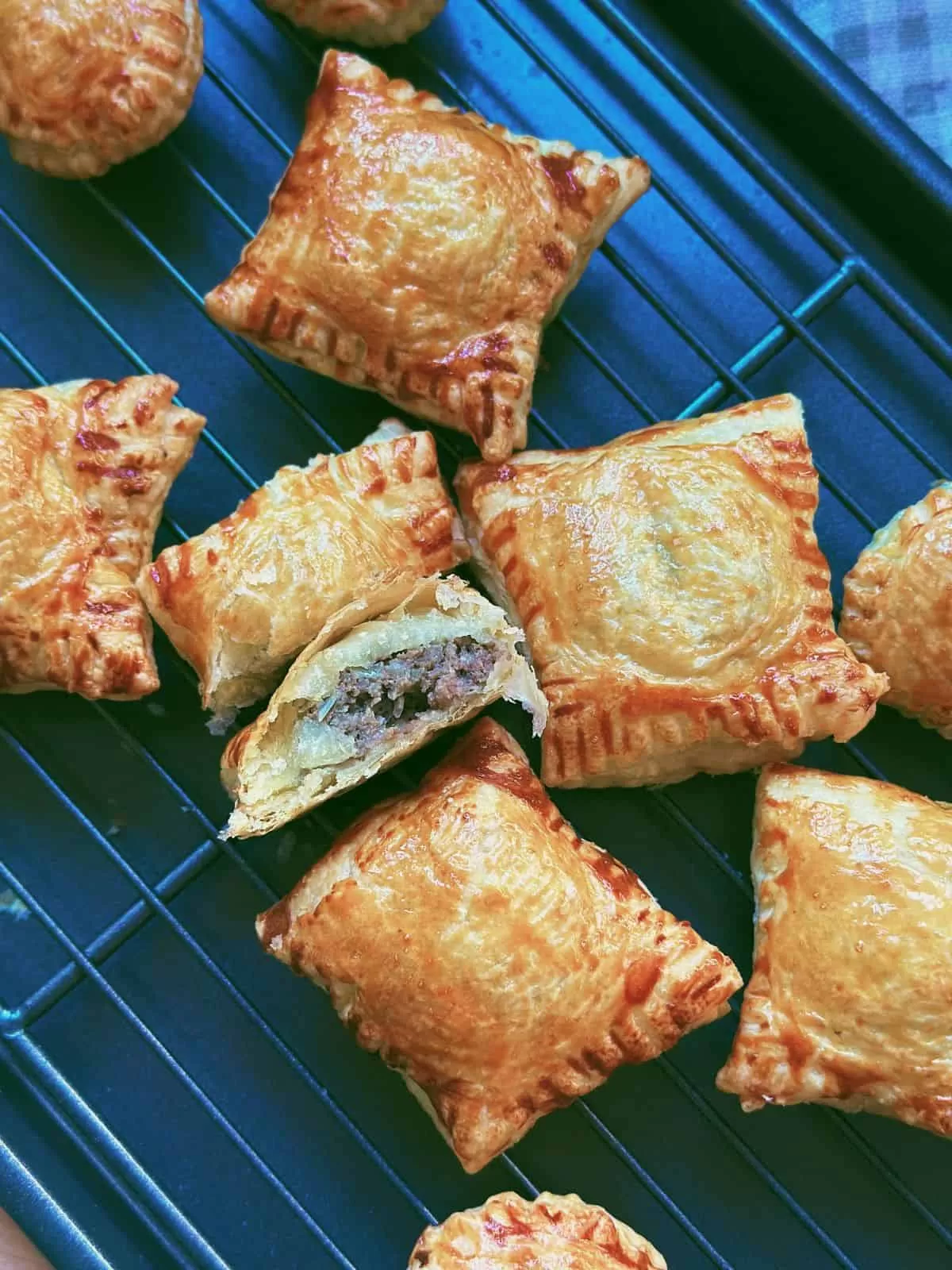
9. Vietnamese Yogurt
Sữa Chua (literally “sour milk”) or Da Ua (the Vietnamese way of saying “yogurt”) is our take on French yogurt.
Vietnamese yogurt is lightly sweet, and the ultimate test? It shouldn’t spill when you flip the jar upside down—hence the famous Sữa Chua Úp Ngược (Upside-down Yogurt). Thick, creamy, and just right.

10. Gà Rô Ti (Vietnamese Rotisserie Chicken)
Ga Ro Ti is a Southern Vietnamese favorite, especially around the Mekong Delta (Miền Tây).
Although the name comes from the French poulet rôti (“roasted chicken”), the Vietnamese version is a little different.

The chicken is quickly fried to get that golden color, then simmered in coconut water until it reduces into a glossy, sweet-and-savory glaze. Every bite is packed with flavor and totally addictive.
11. Bánh Kẹp Lá Dứa (Vietnamese Pandan Waffle)
This sweet treat is a fun example of how we Vietnamese borrowed a little inspiration from French baking (okay, waffles aren’t exactly French, but you get the idea).
Instead of the usual milk and butter, we switch things up with coconut milk and pandan, giving it that unmistakable Southeast Asian flavor.

To get the perfect texture, these pandan coconut waffles mix regular flour with a bit of rice flour and tapioca flour—crispy, soft, and just right.
12. Bo Bun (Vietnamese Beef Noodle Salad)
The last one on my list isn’t French-inspired, but it’s a Vietnamese classic that’s made its mark in France. When I visited Paris, I was amazed at how much the French love Vietnamese food now.
You can find authentic Vietnamese dishes all over the city, grab Nems (fried spring rolls) at supermarkets, and see Bò Bún featured in almost every Asian restaurant.

Bò Bún is basically a simplified version of Bun Bo Xao: rice noodles topped with stir-fried beef, shredded salad, and served with the all-important Nuoc Cham sauce. Fresh, flavorful, and endlessly satisfying.
So, here you have it – 12 delicious French-Vietnamese food delights that are definitely worth a try. Whether you’re planning a trip to Vietnam or cooking up these dishes in your kitchen, give them a shot.
You can discover a compilation of Vietnamese recipes on my blog and subscribe for new updates. Furthermore, explore Beyond the Pho to delve deeper into Vietnamese & Asian cuisine and culture.
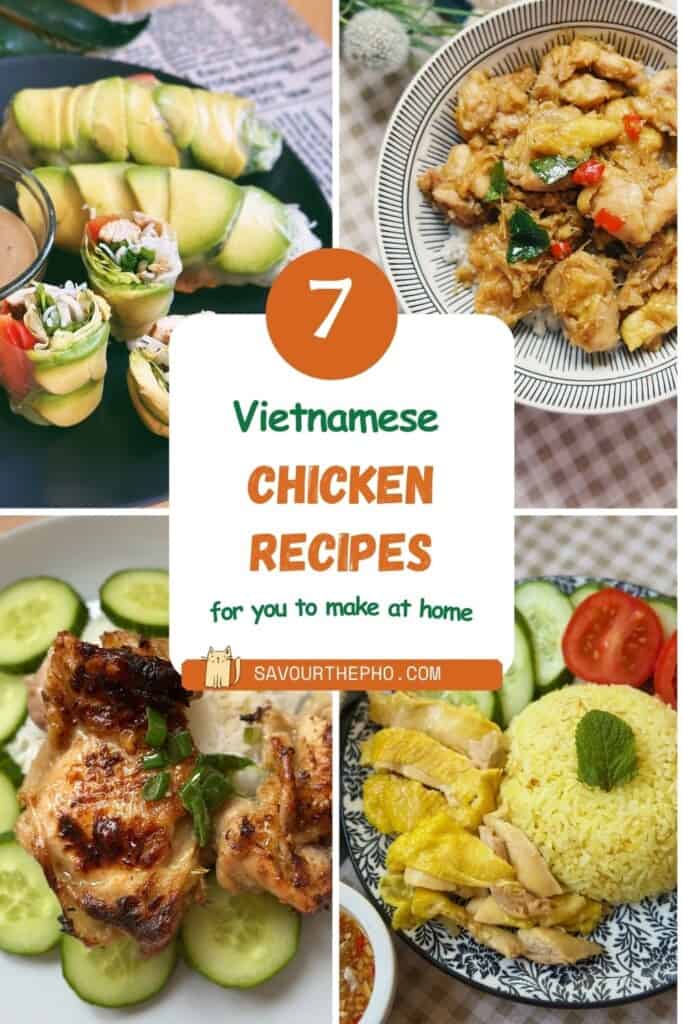

(fresh & fried)
